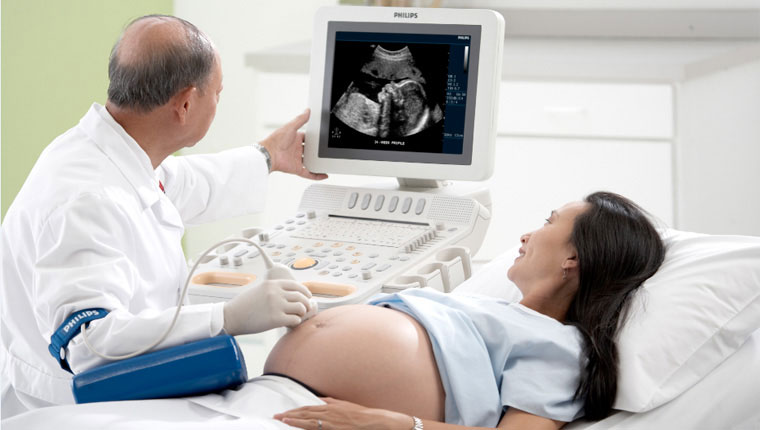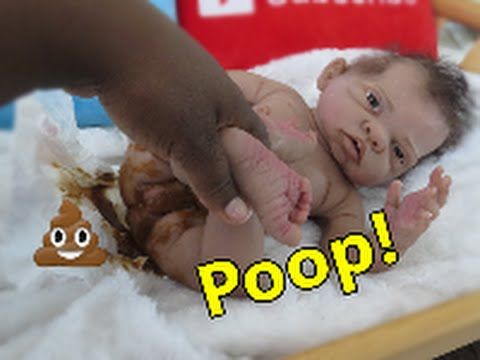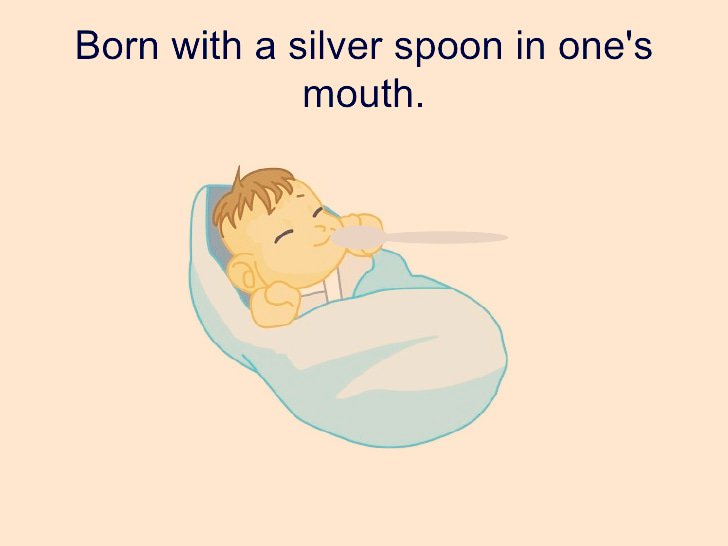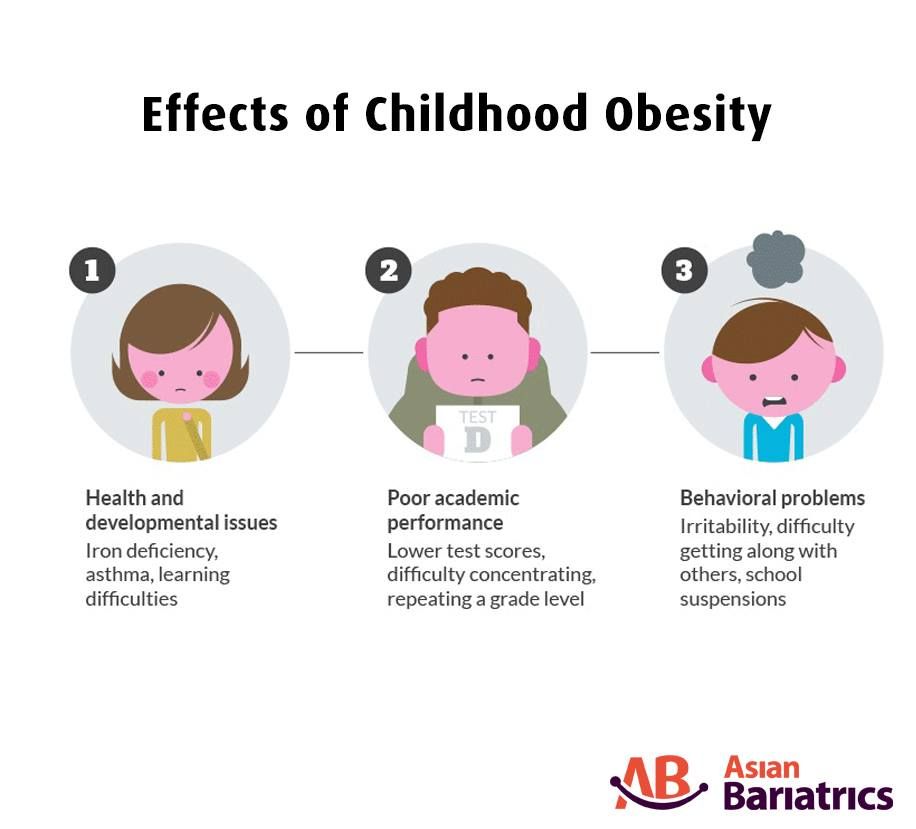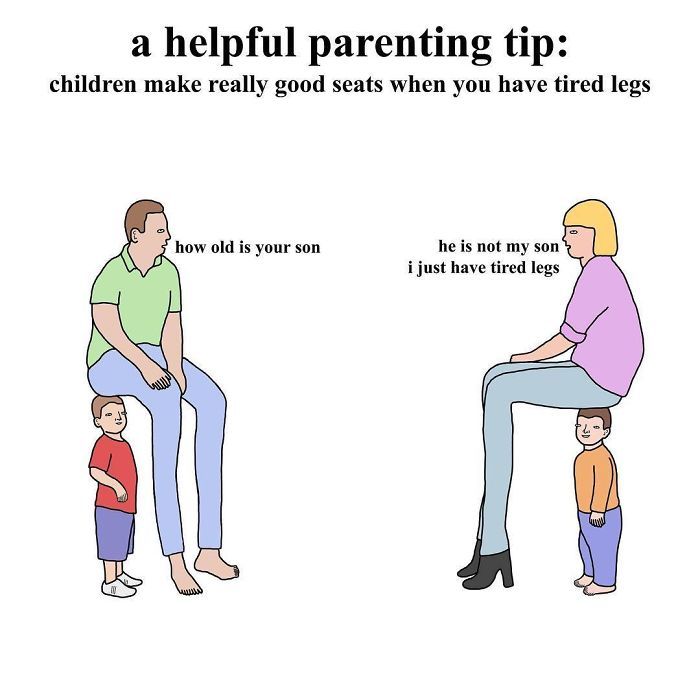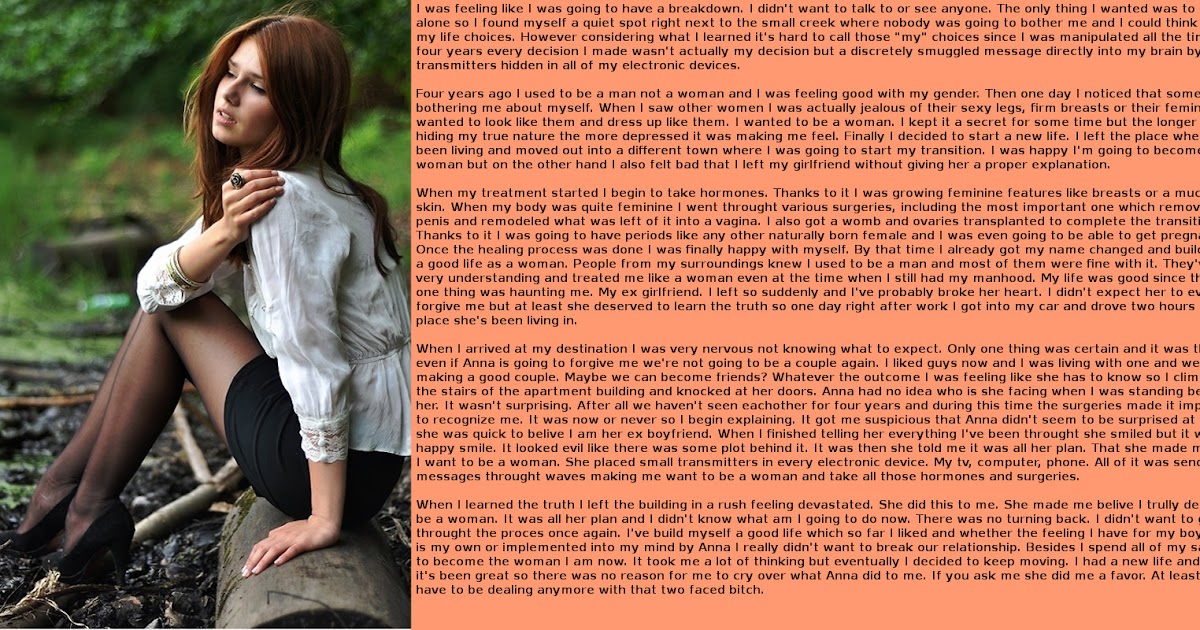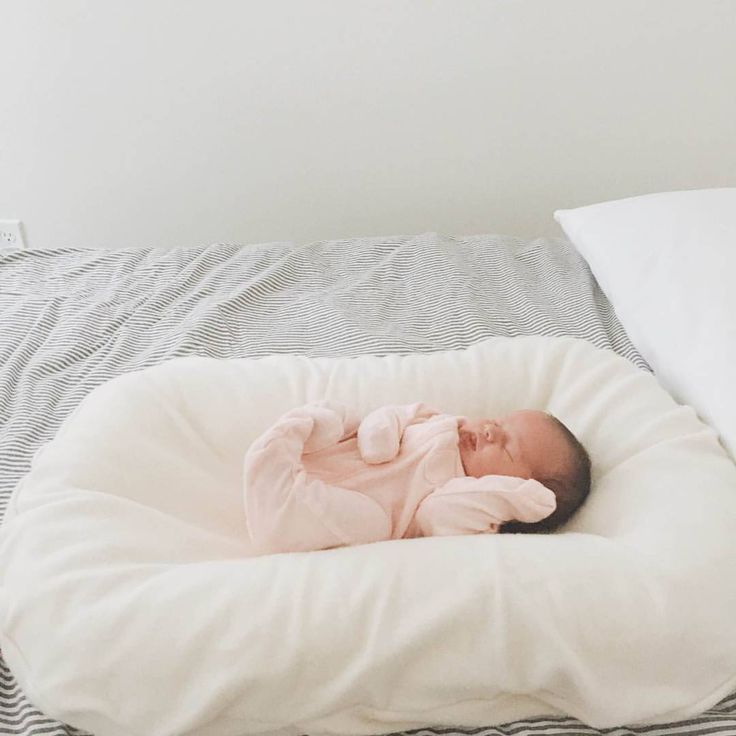How often should i sit my child on the potty
Creating a Potty Training Schedule That Works
A solid potty training schedule can set you and your toddler up for success – especially when you’re first getting started. Used in conjunction with a potty training chart and rewards, your potty training schedule will help your children gain potty independence in no time.
How to Create a Potty Training Schedule
When you first start potty training, the majority of work will be done by you – the parent. Unfortunately, it’s not usually as simple as taking off that diaper and having your child tell you every time they need to go.
In fact, for the first several days (and maybe weeks), it may feel like you are the one that is potty trained – trained to put your child on the toilet every 20 minutes.
But if you can stick to a solid potty training schedule, it will pay off in the end.
1. Clear your schedule.
Part of the potty training schedule is making sure you have time in the first few days of potty training to stick around the house and make using the potty a priority. It’s best if you can spend at least two or three days at home and not be distracted by errands, multiple caregivers or having to visit strange bathrooms.
This will also give you the time you need to really evaluate if your child is ready for potty training, as well as practice your carpet cleaning skills.
2. Set a timer.
Once you take off the diaper, set a timer and plan to take your child to the bathroom every 20 or 30 minutes.
One of the main causes of potty training accidents is because the child is having too much fun or is too engrossed in play to listen to their body and make it to the bathroom in time.
At first, it is your job to interrupt their play to give them time to go potty. They probably won’t need to go every 20 minutes, but at least you’re giving them the time and space to sit on the potty for a few minutes to try.
NOTE: If your child is not able to stay dry during 10-minute intervals, chances are they just aren’t ready for potty training.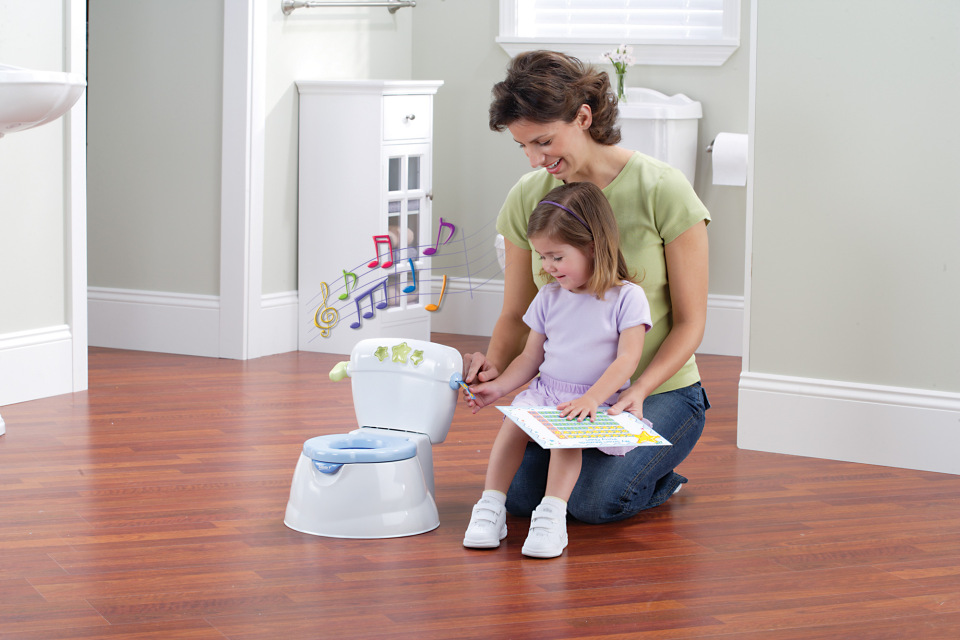 Read this article about when to start potty training and make sure your child is showing the six signs of readiness. If not, try again in a month or so.
Read this article about when to start potty training and make sure your child is showing the six signs of readiness. If not, try again in a month or so.
3. Incorporate potty training charts and rewards.
Potty training charts and rewards are important parts of the potty training process – and can help your child get really excited about your new potty training schedule.
Click here to read more about (and download) potty training charts.
Click here for great potty training rewards ideas (and what to watch out for.)
4. Stretch it out.
Once you’re a few days in, you can stretch out the potty breaks. Maybe go from 30 minutes to an hour. And then from an hour to two hours. Until eventually you won’t need a timer at all. No, really. It will happen!
5. Plan mini trips.
No, we’re not talking about mini getaways. We’re talking about quick trips to the grocery store or to grandma’s house. Once you and your child are feeling good about your schedule, incorporate a few mini trips into your day.
Maybe you take a walk around the block in underwear in between potty breaks. Or take a 20-minute spin through the grocery store. At first, you will be more nervous than your child about leaving the house. But keep the trips short and close to home to start, and build up your confidence. You can do this!
6. Go back to the schedule.
If you start to notice more accidents as you get further along in potty training, go back to your schedule for a day. Chances are, the accidents are caused by a lack of schedule. If that doesn’t work, it’s possible that your child is experiencing a potty training regression.
Potty Training Doesn’t Have to Stink!
If you’re potty training your child, Kandoo is here to help. Follow the three steps below to receive all of the potty training support we have to offer.
1. Get Potty Training Resources
Visit Kandookids.com/PottyTraining for hacks and support on your potty training journey. From the very basics to how to handle potty training regressions, poop problems and wiping, we’ve got answers to your questions.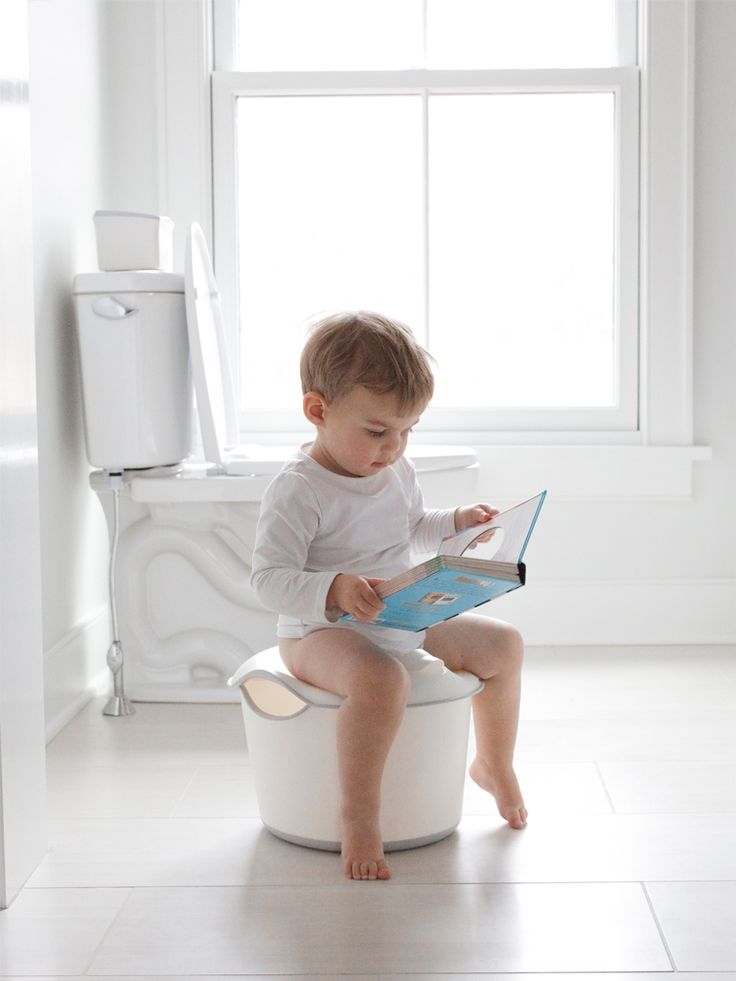
2. Sign up for our Free Potty Training Program
Need a little more help and support? Sign up for our FREE potty program. It’s full of step-by-step advice to walk you through the entire potty training process – from the first time you introduce the potty to how to throw a potty training party to celebrate your success at the end.
Sign up, and you’ll receive the most effective hacks on potty training including a step-by-step plan of action on when to start, supplies to buy, how to keep it silly, how to handle set backs and more! Click here to join now.
3. Stock up on Supplies – like Kandoo Flushable Wipes
Kandoo Flushable Cleansing Wipes clean up to 30% better than toilet paper. The wipes pop up with the push of a button, making them perfect for little hands. Added bonus? No more using too much (or too little) toilet paper.
Help your little one get a clean wipe every time with the Kandoo Potty Time Pack. From Kandoo Flushable Wipes to Kandoo BRIGHTFOAM® Hand soap – and even a potty training superhero cape – the Potty Time Pack has everything you need for potty training success.
If your child likes to be independent, the Kandoo Potty Time Pack can help. Click here to purchase it now with free shipping!
Pin It!
Do's and don'ts of potty training your toddler
Potty training tips parents should know about when and how to start
Potty training is an important developmental milestone. But sometimes it can be more stressful for parents than it is for kids!
Most children complete potty training by 36 months. The average length it takes toddlers to learn the process is about six months. Girls learn faster, usually completing toilet training two to three months before boys do. Firstborn children also tend to take longer to learn than their younger siblings, who pick up cues from the older kids.
On their podcast Kids Considered, pediatricians Dean Blumberg and Lena van der List of UC Davis Children’s Hospital shared the following five tips for potty training your toddler.
1. DON’T start potty training at an age when you think you should.
 DO wait until your toddler is ready physiologically, cognitively and emotionally.
DO wait until your toddler is ready physiologically, cognitively and emotionally.For physiological readiness, your child must be able to control the sphincter, the muscle that holds and empties the bladder and rectum. This usually happens around 12-18 months.
For developmental readiness, your toddler should be able to get to the toilet on their own, sit down, pull their pants up and down, and be able to communicate to you or a caregiver that they need to go.
For emotional readiness, your child might show an interest in being potty trained. For example, they might go to the same spot in the house when they need to go. They might tell you when they want their diaper changed. Or they may show that they can hold their pee for longer periods, like waking up from a nap with a clean diaper. This usually happens after age 2.
2. DO get potty gear that makes potty training easy and fun.
Consider getting a small potty seat or outfit your own toilet with an insert and stepstool.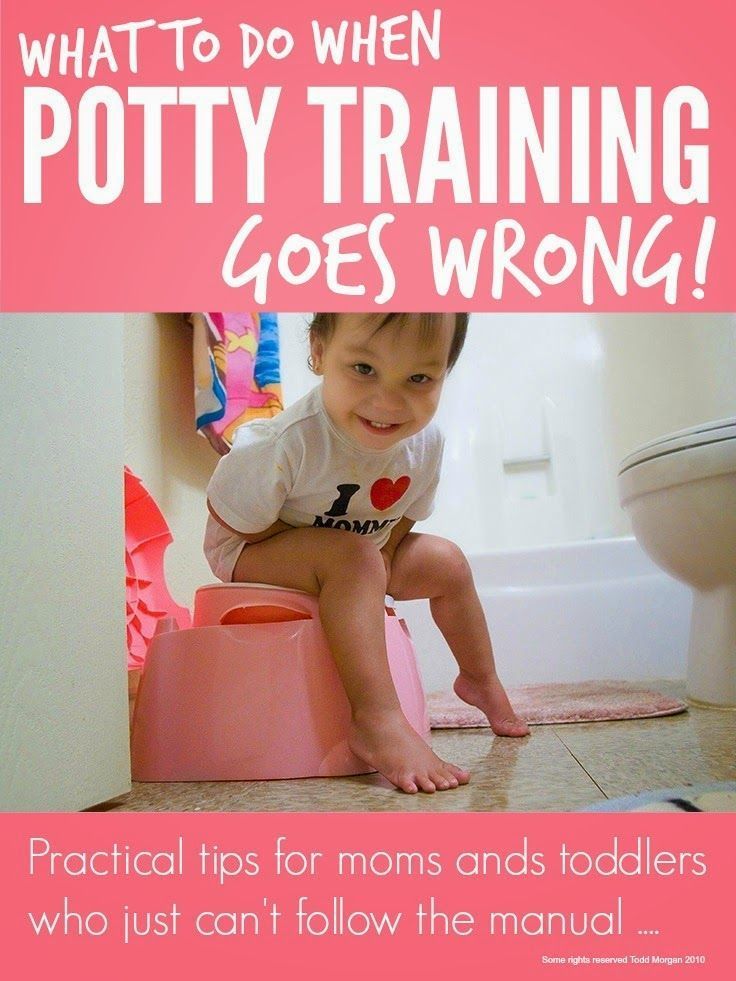 Let toddlers pick out the color or design. Getting underwear designed with your child’s favorite characters also makes potty training more exciting. Make sure to buy many pairs in case of accidents!
Let toddlers pick out the color or design. Getting underwear designed with your child’s favorite characters also makes potty training more exciting. Make sure to buy many pairs in case of accidents!
Another tip: Allow your toddler to play on the potty, starting with sitting on it fully clothed, so they can get used to it. Toilet training-themed books, videos, songs and games can also get your child more involved in the potty training process.
3. DO be consistent and give lots of praise while potty training. DON’T force it or punish your toddler.
Create a plan for consistency. A common strategy is taking your child to the potty every 30 or 60 minutes for the first couple of days. If that goes well, try to extend the periods between tries. Some good opportunities to encourage your child to use the toilet include waking up in the morning, after meals, before and after naps, and before bedtime.
Choose a word your family is going to use for pee and poop, and stick to it!
If your toddler doesn’t go potty after a minute or two on the toilet, don’t force it.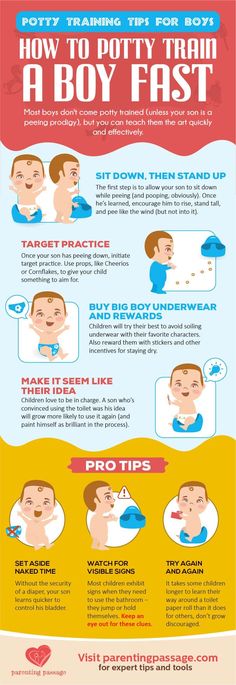 Get up, move on and try again later. If your child has an accident, don’t punish them. Help them clean up, show them what to do with their dirty underwear and how to change into new ones.
Get up, move on and try again later. If your child has an accident, don’t punish them. Help them clean up, show them what to do with their dirty underwear and how to change into new ones.
Praise your child every time they make it to the potty, even if things don’t go as perfectly as you would like. Reward them with sticker charts in the bathroom or treats like a small candy. Rewards are highly motivating for little kids!
4. DO be prepared for common issues during potty training.
If your toddler is afraid of flushing or sad to see their poop disappear, try making it a fun game, like waving bye-bye as it floats away.
Boys may have more success sitting down. Some might make a big mess standing up. Either way, this is all fine while training.
Some kids may only want to potty with one parent. Others may want to go only at their daycare because their peers do. Encourage success where you can.
If your child is struggling with constipation while pooping, consult your pediatrician before starting potty training.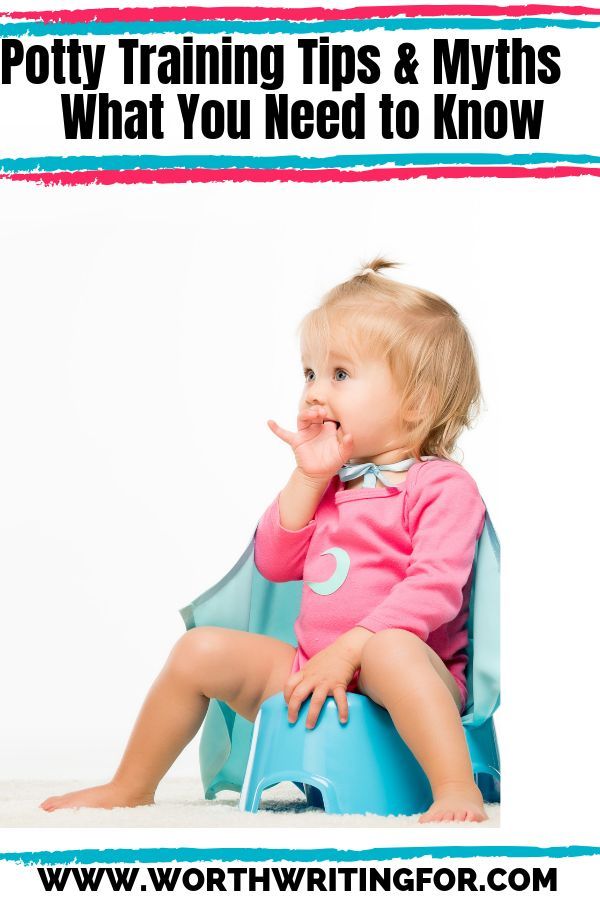
5. DON’T be frustrated if you experience setbacks while potty training your toddler.
Eighty percent of families will experience setbacks while potty training their toddler. Even if your child is successful making it to the bathroom during the day, it’s very common for them to still need diapers or pull-ups during naps and overnight. Most kids, by age 6, will be able to get through an entire night’s sleep without having an accident.
If your child isn’t making progress, stop the potty training process and try again in another two or three months. Don’t let family or friends make you feel you have to do it a certain way or on a certain timeline. Every family and child’s situation is different!
More helpful resources for parents on potty training:
- Kids Considered podcast – Potty Training episode
- Toilet training toddlers (HealthyChildren.org)
- 17 best potty training books for kids and parents (Parents.com)
Skip to navigationSkip to content
Blog sh
Lilia Minlina,
early development specialist,
mother of a 2-year-old daughter
You will be very surprised, but every day two thousand mothers in Russia make a request to Yandex "how to teach a child to go to the potty on his own.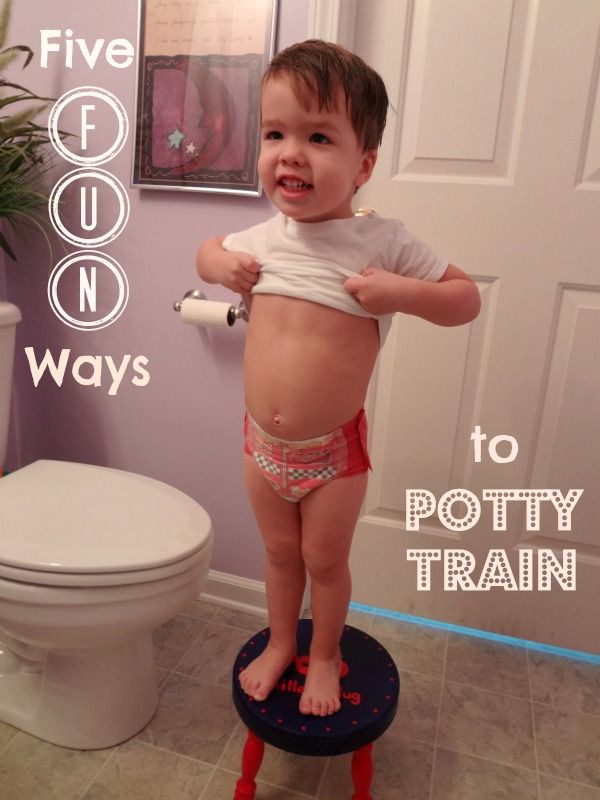 " However, it is not surprising that most often this request is made by mothers of children aged 1 to 2 years.
" However, it is not surprising that most often this request is made by mothers of children aged 1 to 2 years.
And yes! There is no such request for the age of 5 years. Apparently, by the age of 5, all children somehow master this “insidious” skill.
We have selected 10 most interesting recommendations from leading pediatricians and pediatric neuropsychologists on the development of this skill in children: At the same time, pediatricians note that babies become squeamish - they ask to wash their hands, change their blouse (if they get dirty) or cry if their pants become wet. When your baby begins to weigh himself in this way, this should serve as a signal for you - it's time to buy a comfortable potty! But now we know that CAM is when: he wanted to, he asked himself, he took off his things, he sat down and dressed himself back. But recommendations on what to do are strictly prohibited: Following these simple expert advice - the process of mastering the skill of "going to the potty" will become really fast for a kid. And for mom - perfect painless. And already at the age of 2 years, the baby will calmly sleep dry in his bed. Subscribe to our newsletter, and you will find even more interesting recommendations from leading specialists in the field of happy and healthy childhood. The normal development of young children is largely determined by proper care for them. The methods of “early potty training” practiced until recently (during the first year of life) should be considered outdated and non-physiological, since their use does not take into account the degree of maturity of the muscles and nervous system of the child (in particular, the innervation of the bladder and intestines). As a result, learning becomes a long and unproductive process. In addition, when using them, children may experience negative reactions (since education is built on pressure from parents) and somato-neurological dysfunctions, which subsequently is fraught with problems such as constipation, urinary / fecal incontinence, numerous neurotic reactions (including logoneurosis, tics, etc.). .), and upon reaching a certain age - enuresis, overactive bladder and persistent encopresis. The described methods of early potty training are reflex, that is, based on the development of a conditioned reflex, and not a conscious skill. In the process of training, parents determine the signals and "body language" of the child before urination or defecation, similar to how pets are toilet trained. Such techniques are not based on real learning, but on the development of a reflex, and therefore are ineffective. The success of the process depends on whether the adult can recognize the need or desire of the child to go to the toilet (there are no basic elements of learning, and the process is not associative). The "skill" acquired by the child is of a non-permanent nature and can be lost in any stressful situation (for example, illness or moving from an apartment, a quarrel between parents) or other adverse circumstances. To make the process of potty training quick and easy, parents should be informed about the “child-centered” method. The “child-centered” or physiological toilet training method is a method that takes into account the degree of maturity of the central nervous system. It is the central nervous system that provides innervation to the muscles, organs of the genitourinary system and the gastrointestinal tract of children. This approach helps parents to understand the child correctly and direct the process of potty training in accordance with the level of development of the child. Up When potty training a child, you should know that the success of training depends entirely on how ready his body is for it. Up True, many patient and active parents manage to achieve excellent results already in the first year of life. Quite often, proud statements are made that a child at 10, 9, 8, even at 7 months old, pees on the “pee-pee” command, and poops only after “ah”. And there is absolutely nothing surprising in this. It is not difficult to achieve the appearance of a conditioned reflex by repeated beeping and aakan, only this reflex is not quite what we need. Why? Yes, because this is the connection between the process of emptying the bladder and the sound "wee-wee." And if this sound is pronounced often and for a long time, and if anyway you are not left alone until you pee, then this connection will be established sooner or later. But the chain should be different: not “wee-wee” - filling the bladder - urination, but filling the bladder - a pot - urination. That is, the physiological process (filling the bubble), and not the sound stimulus (“pee-pee”), should become the motive for the potty. Potty training around 18 months of age Potty training at an earlier age Child consciously controls all processes Process based entirely on reflexes Acquired skills are not lost With any changes in a child's life, he quickly forgets everything he has learned Teaching is faster and easier Teaching is longer and harder for the child The child enjoys his successes and the process itself Frequent misses, more stress for the child Payback for early success comes in the second year of life. Up In order for the process to go as smoothly as possible, you should know some signs that indicate the mental and physiological readiness of the child's body to learn toilet science. Such signs include: And, finally, the most reliable sign: the ability to convey the word “I want” to parents in any way — with a word, facial expressions, gestures. And not because it will be easier for mom and she will have time to put the child on the pot - this indicates that the baby has learned to communicate! Up Is your baby about 18 months old? Did you notice any of the above signs of readiness in his behavior? So, you can start mastering a new complex science. 1. In addition to the readiness of the child, there must also be the readiness of adults. Obviously, at the stage of transition from a diaper to a potty, the time spent on direct communication with the baby increases markedly. It is impossible to develop toilet skills only on Sundays or only on those days when an official visit from the grandmother is expected. 2. A child, like any adult, is prone to mood swings. Early toilet training is best done when all family members are healthy and cheerful. 3. Buy a comfortable and ... warm potty - a cold seat can spoil your relationship with the potty for a long time. The seat should repeat the anatomical curves, it is desirable to have a comfortable back (such pots are called physiological). First of all, wash the pot and put it in the room with the crumbs so that it becomes a familiar item for him. 4. Getting to know the potty. We offer it to the child when the probability of a "process" is maximum - after sleep, after eating, when he shows by his behavior that it is time for him. 5. In case of success - very, very praise. In case of failure, we do our best not to be upset, and if we are upset, we do not show grief. 6. We fix attention not only on the potty itself, but also on the actions immediately preceding communication with the potty and parting with it: how to get the potty, how to open it, how to take off the panties, how to put on the panties, how and where to pour the contents from the pot how to wash the pot, how to close the pot and put it back in its place. The implementation of all of the above easily turns into an interesting game. It is wonderful if, after each successful action, parents do not skimp on praise - the whole process in this case is accompanied by positive emotions, and this is perhaps the main thing at the transitional stage. 7. Gradually we organize meetings with the potty not only when it is time for the child, but when the daily routine requires it. For example, without fail we sit down before going to bed, before a walk. 8. You shouldn't part with diapers completely and irrevocably. They are quite useful for traveling in transport, at night, for a walk in the cool season, at first and during daytime sleep. But every time when we woke up dry and quickly sat down on the potty, we pay attention to what good fellows we are, and in confirmation of this obvious fact, we demonstrate a dry diaper. 9. It is important that the pot is perceived not as a toy, but as an object of a very specific purpose. And in this regard, you should not encourage just playing with the potty. “This is a chair. They sit on it" - and, by analogy, - "This is a pot, they pee and poop on it." 10. It doesn't matter: a potty or a toilet (assuming a special child seat). Here's how you feel more comfortable. Considering that, especially at first, the process can be delayed, the potty is more convenient, since it is more pleasant to communicate in a room than in a cramped toilet space. Combining a potty with a toilet is a perfectly acceptable option, especially for boys. Up “We are already one year old. Our Anyuta can sit on the potty for a very long time, play, look at books, but she does not do what is necessary. How can we be? Maria Don't worry about it. Your daughter is still too young to be potty trained. It is possible to start accustoming a child only when his body is physiologically ready for this - that is, approximately at the age of 18 months. Only by this age does his nervous system form and he begins to realize that he wants to go to the toilet. And now, when your daughter is 1 year old and she is starting to walk, it is very important to help her develop balance and strengthen her back muscles - exercises on a gymnastic ball would be very suitable for this (swaying a baby lying down). with your back or belly on a ball) or stepping over obstacles (over toys on the floor). “We started potty training our baby about 3 weeks ago, he seemed to understand everything right away and did everything right, and then he began to refuse, and now he doesn’t even want to come close to him. We are 1.5 years old. Irina This happens often, and there is nothing to worry about. Try to remember, after which the child began to refuse the potty. Maybe something scared him, or the pot was cold. Pay attention to the situation in the family, think about what has changed in the life of the baby and is he experiencing stress? And if you understand the reason, try to eliminate it. Never force him to sit on the potty. It is best to suspend the learning process for a few weeks and surround the child with attention and affection. Usually, after such a respite, children are ready to reacquaint themselves with the potty. “Our Katyusha, at 1 year and 7 months old, does not use the potty. Don't worry! This is absolutely normal, moreover, this interest of your daughter indicates her readiness for potty training. If she is now ignoring the learning process, take a close look at my rules for successful potty training and make sure You are doing everything right. And if a mistake was made somewhere and the pot now causes negative emotions in the child, stop and start learning again. Take advantage of her curiosity about adult behavior. It is known that kids are very fond of imitating adults. Buy your daughter a baby toilet seat and show her how to use the toilet. After that, most likely she herself will want to act like an adult and do the same. Up 1. “It seems to me that the sooner I start teaching the baby to use the potty, the sooner he will learn to do it. You, like all parents, want only the best for your child and try to develop all his abilities as early as possible. But in such a matter as potty training, you should not rush. The earlier you start, the longer and more difficult this process will be for the child. After all, he will be able to control his bladder and intestines only when his body is sufficiently developed - an average of 18 months. And if you start learning at the right age, then the child will learn much faster and easier and will be able to be proud of his achievement. And you will be proud of it! 2. “Is it true that if a baby wears disposable diapers all the time in which he does not feel that he is wet, then it is more difficult to teach him to use the potty?” No matter what diapers your baby wears, or if he wears them at all, he will learn to use the potty when his body is ready. In support of this, there are the results of studies that compared the behavior of two groups of children - in the first group, babies wore traditional gauze diapers from birth, and in the second - disposable diapers. 3. "I'm afraid to wear diapers on my 3-month-old son, because I heard that they can lead to infertility due to the greenhouse effect" First, the reproductive system in boys begins to develop only at the age of 7-9 years. At the age of 7, spermatozoa precursor cells appear, and the spermatozoa themselves can be detected not earlier than at 10 years old, but as a rule, much later. From this it is clear that diapers cannot affect the quality of sperm in any way - boys at this age do not have it in principle. There are also a number of studies that confirm that disposable diapers do not create a greenhouse effect - the temperature under the diaper is practically the same as the skin temperature in ordinary diapers, and the humidity level under the diaper is much lower than when using diapers. 4. “My daughter is 1 year old. I know it’s too early to potty train her, but I’m very worried that we won’t have time to learn before kindergarten.” No matter what age you start potty training your child, there is no guarantee that she will learn to do it before kindergarten. After all, all children are potty trained at about the same time. Therefore, if you start teaching at an early age, this will not help speed up the process, but on the contrary, the training will be delayed - the child will not understand what they want from him, she will be upset because of this, and you too. And if you start when the child's body is ready for this, then you and your baby will achieve success much faster and easier, and the child will already understand that this is his achievement and will be proud of it. 5. “Many of my friends in the yard say that their babies go to the potty at the age of 9, 8, and even at 6 months. Tatyana, I understand that you, like all other parents, compare your child with other people's children and try to prove that yours is no worse. I want to reassure you - at such an early age, children are simply physically unable to consciously go to the potty. Their nervous system is not yet sufficiently developed to give signals about a full bladder or intestines. Until the age of 1.5, they go to the toilet without realizing it or noticing it. And you can not influence it in any way and accelerate the development of the child. Your girlfriends most likely keep silent about the fact that their babies sit on the potty and listen to endless “pee-pee” and “ah-ah” for 30-40 minutes, and by this time the child’s even empty bladder is full, and they pissing in a pot. And this leads to the development of a conditioned reflex to the mother's requests to pee or poop. So remember that everything, especially potty stuff, has its time. 6. “My mother thinks that using diapers is better for our baby's health than diapers. Is it true?" Such prejudices of the older generation towards diapers are due to the fact that earlier these hygiene products were simply not available. And today, grandmothers, who are often suspicious of everything new, find it difficult to appreciate the merits of diapers. Although, if we compare diapers with diapers, then the advantages of the first are obvious - the wet surface of the diapers causes irritation and skin diseases, and in cold weather, the duration of the baby's walks in diapers is significantly reduced. The Union of Pediatricians of Russia conducted clinical studies, and the results showed that the moisture content of the baby's skin in diapers is much lower than in diapers.

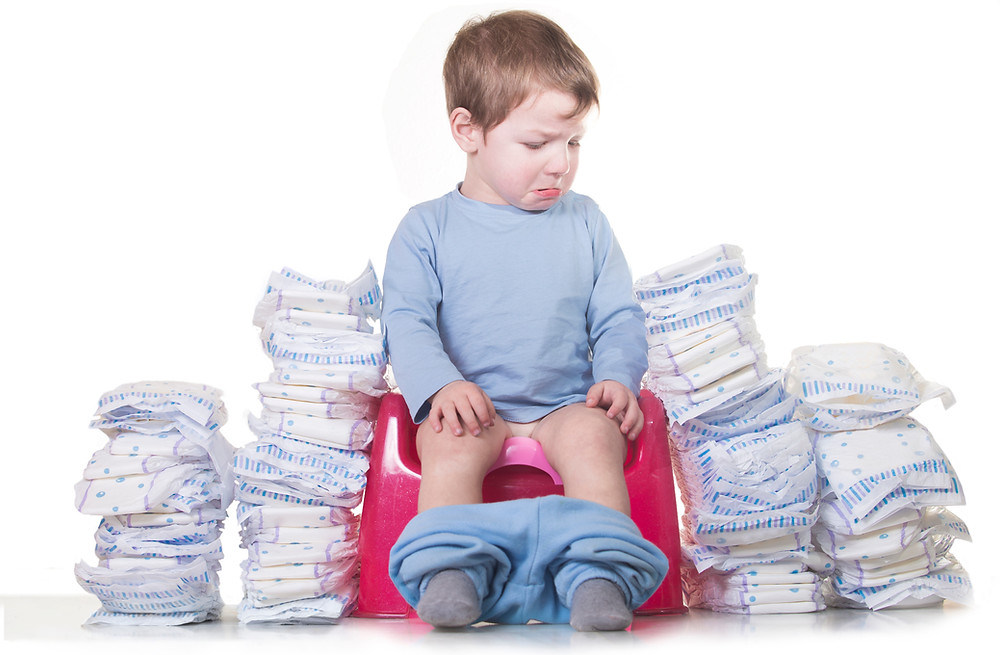
 " Experts say that such a method of "training" in adulthood will only interfere with a person. And all hits in the “shell” or in “time with the sound of water” are just the merit of the mother, who caught the baby in time.
" Experts say that such a method of "training" in adulthood will only interfere with a person. And all hits in the “shell” or in “time with the sound of water” are just the merit of the mother, who caught the baby in time.
Potty training
When to start
 The process of potty training is an important stage in the development and maturation of the child, as well as in the formation of his relationship with his parents. Many parents tend to become overly anxious when their child does not develop according to their expectations.
The process of potty training is an important stage in the development and maturation of the child, as well as in the formation of his relationship with his parents. Many parents tend to become overly anxious when their child does not develop according to their expectations. 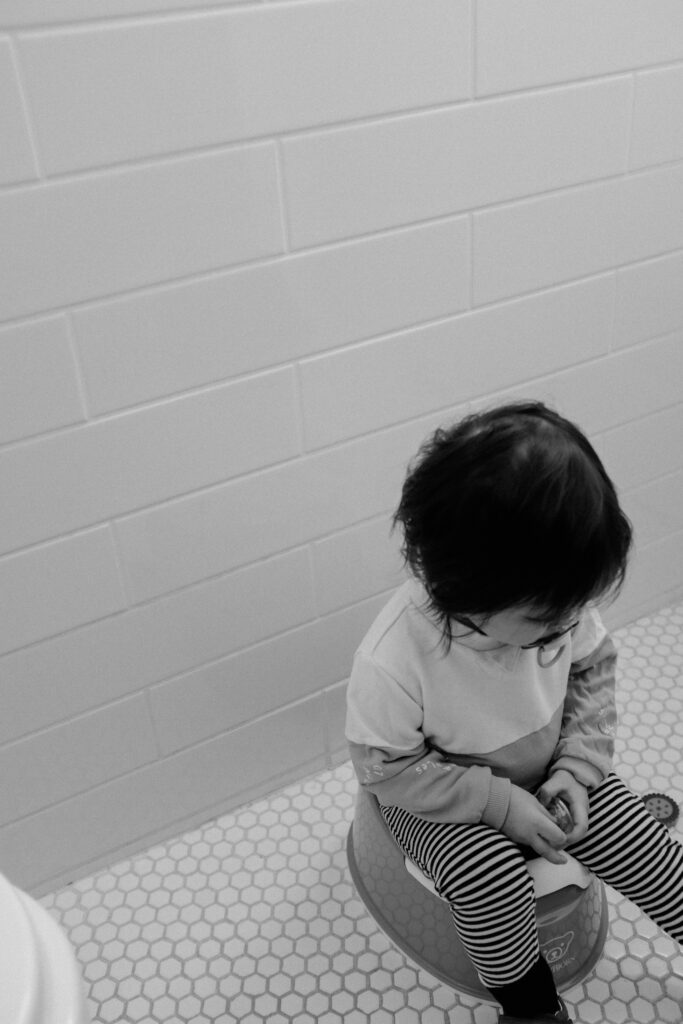 Forced potty training at any age can be stressful for both the child and the parent. The described stress becomes even more pronounced if the child is not able to understand or interpret the command received. Attempts to impose on a child such methods based on adult dominance inevitably lead to a delay in the learning process and low efficiency.
Forced potty training at any age can be stressful for both the child and the parent. The described stress becomes even more pronounced if the child is not able to understand or interpret the command received. Attempts to impose on a child such methods based on adult dominance inevitably lead to a delay in the learning process and low efficiency. 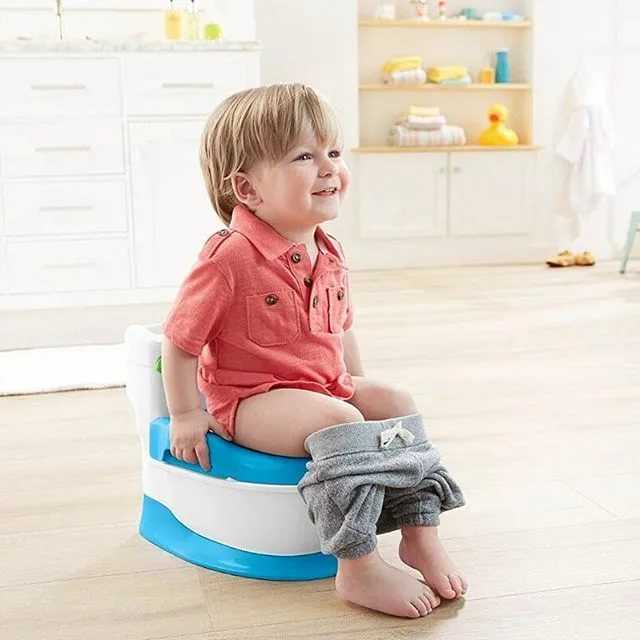 Therefore, attempts to force a child to potty train before he reaches physical readiness and / or increased intensity of training in no way accelerate or bring the desired result closer. Successful potty training is the development of a cognitive (conscious) skill or ability that should be centered around the child; it should be positive and entertaining. It is important to remember that an acquired reflex is easily lost if it is not a learned pattern of behavior.
Therefore, attempts to force a child to potty train before he reaches physical readiness and / or increased intensity of training in no way accelerate or bring the desired result closer. Successful potty training is the development of a cognitive (conscious) skill or ability that should be centered around the child; it should be positive and entertaining. It is important to remember that an acquired reflex is easily lost if it is not a learned pattern of behavior. 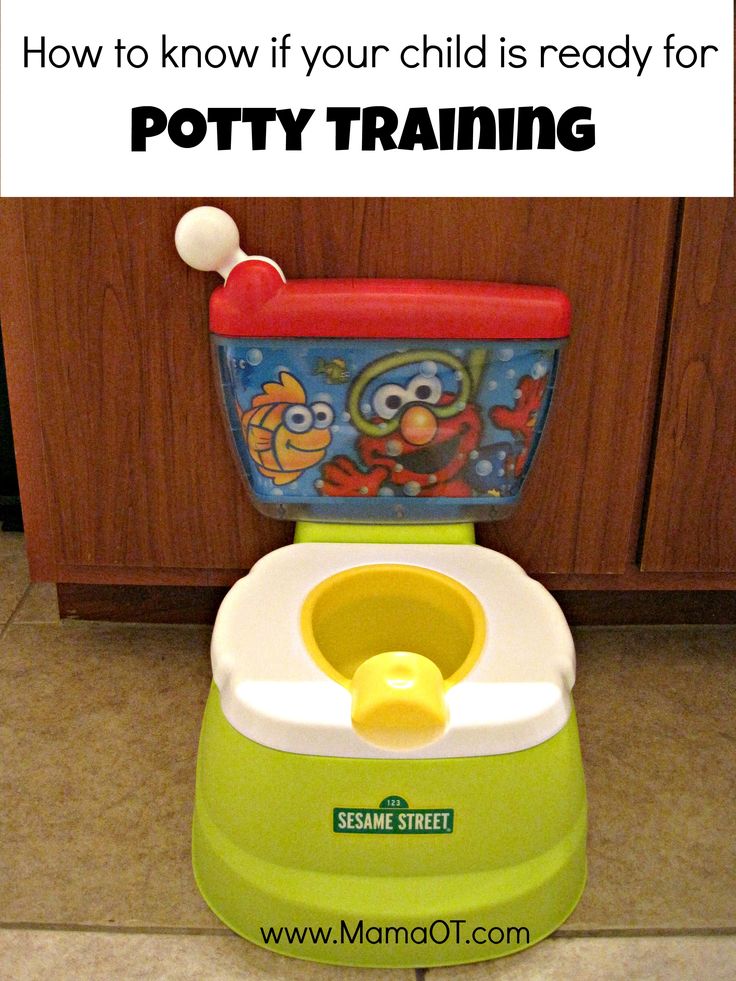 According to this method, the child becomes the main figure, his self-confidence and self-esteem increase. Training, according to this technique, is designed not only to develop a reflex in a child, but to accelerate the assimilation of relevant information or skills, in the case of potty training, the child's acquaintance with his own body. The physiological model takes into account three main components of child development: physiological maturity (strengthening the muscles of the sphincter of the bladder and intestines, the necessary development of the central nervous system), psychological and emotional readiness (understanding and desire to follow instructions). According to the literature, a healthy child reaches the required physiological maturity at an average age of 18 to 24 months (American Academy of Pediatrics, 2003).
According to this method, the child becomes the main figure, his self-confidence and self-esteem increase. Training, according to this technique, is designed not only to develop a reflex in a child, but to accelerate the assimilation of relevant information or skills, in the case of potty training, the child's acquaintance with his own body. The physiological model takes into account three main components of child development: physiological maturity (strengthening the muscles of the sphincter of the bladder and intestines, the necessary development of the central nervous system), psychological and emotional readiness (understanding and desire to follow instructions). According to the literature, a healthy child reaches the required physiological maturity at an average age of 18 to 24 months (American Academy of Pediatrics, 2003). How a baby's body works
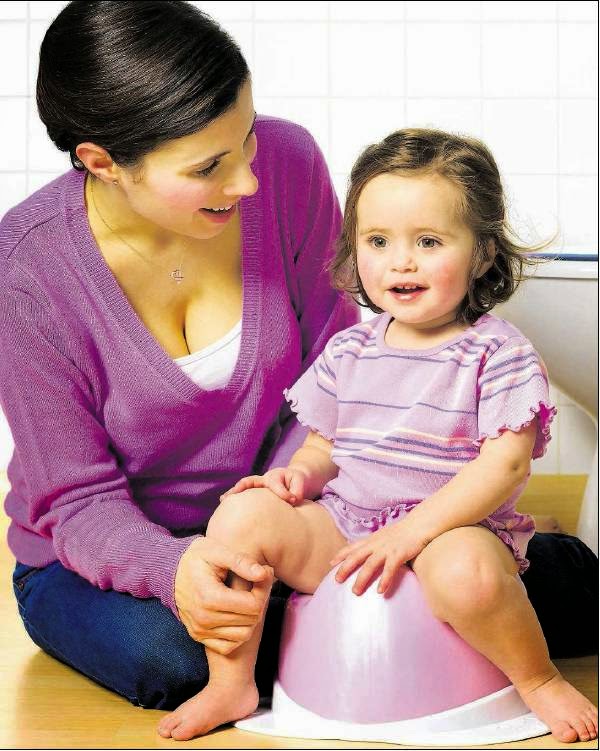 It has been proven that the child's body is ready for potty training on average no earlier than 18 months. A child can consciously go to the toilet only when he develops a connection between the nervous system and muscles. This connection is finally formed around the age of 18 months and consists of numerous neural structures that connect the spinal cord with the bladder and intestines. When the bladder or intestines are full, a signal is transmitted along the nerves to the spinal cord, from there to the brain, and the baby understands that he wants to pee or poop. Only then can the child consciously sit on the potty and do their thing. Knowing this, one can come to very significant conclusions, which, however, are quite obvious. The sooner you start the process of potty training, the more effort it will require from you. Potty training is more successful, painless and easier, the higher the level of physiological development of the child. And if you start training when the child's body is fully prepared for it, you and your child will succeed much faster and easier.
It has been proven that the child's body is ready for potty training on average no earlier than 18 months. A child can consciously go to the toilet only when he develops a connection between the nervous system and muscles. This connection is finally formed around the age of 18 months and consists of numerous neural structures that connect the spinal cord with the bladder and intestines. When the bladder or intestines are full, a signal is transmitted along the nerves to the spinal cord, from there to the brain, and the baby understands that he wants to pee or poop. Only then can the child consciously sit on the potty and do their thing. Knowing this, one can come to very significant conclusions, which, however, are quite obvious. The sooner you start the process of potty training, the more effort it will require from you. Potty training is more successful, painless and easier, the higher the level of physiological development of the child. And if you start training when the child's body is fully prepared for it, you and your child will succeed much faster and easier.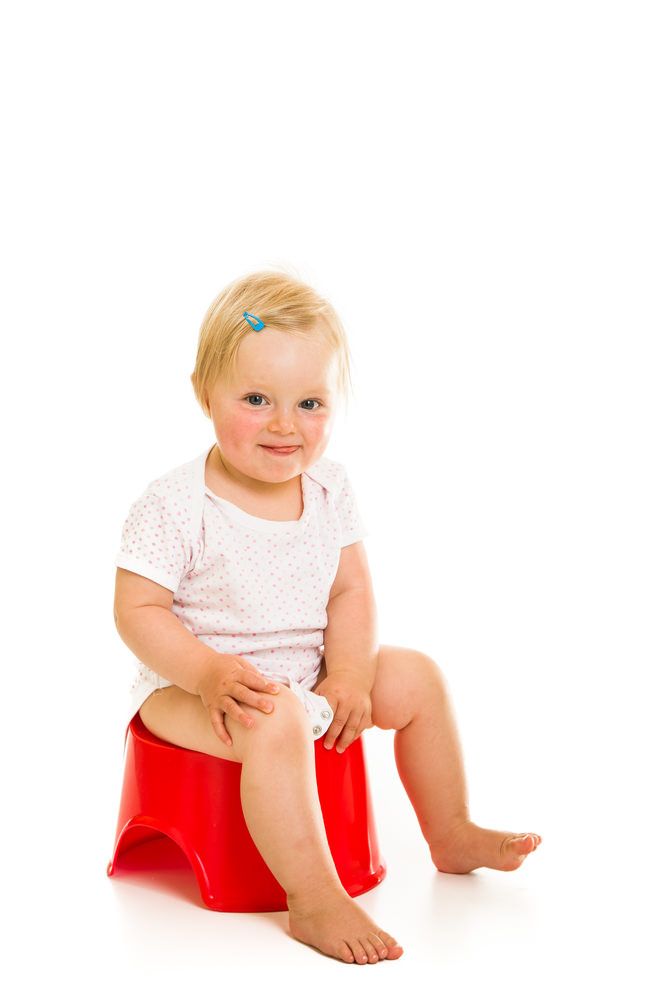
Early successes
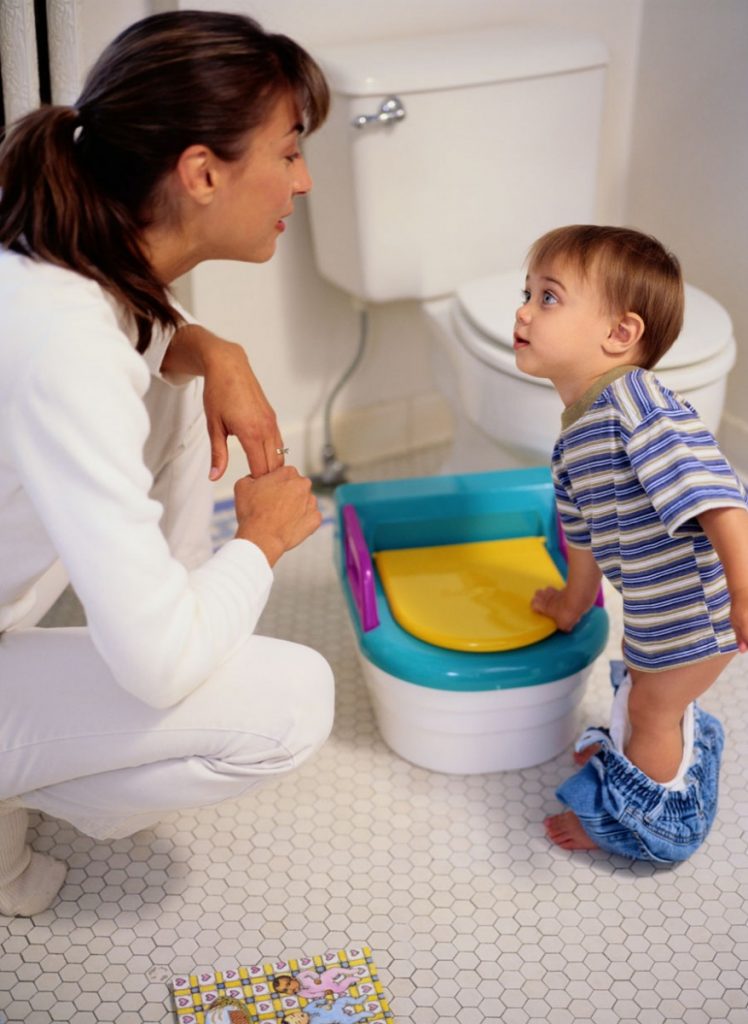
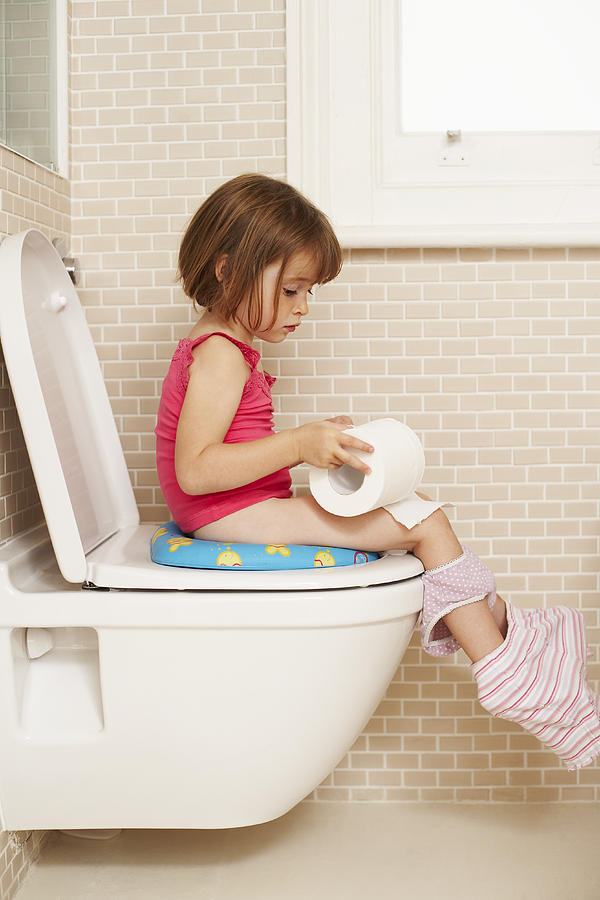 A supposedly capable and developed child, who has been sitting on the potty since the age of 9 months, suddenly, for some “incomprehensible” reasons, stops doing this, and actively fights for his freedom with anxious relatives. And the considerations are very understandable - the time is coming for the formation of that very normal, natural control over secretions, which we have already talked about. The bladder is empty, and they are here climbing with their "wee-wee" ... No matter how "amazing success" you have achieved, but before the child is ready for potty training (and this is approximately 18 months), these successes will be temporary, and misses are frequent. And this must be treated very philosophically. There is absolutely nothing wrong with the fact that you will be able to introduce your child to such an interesting thing as a potty. But this acquaintance, at least from the point of view of medical science, will be superficial, and the skills developed are not stable.
A supposedly capable and developed child, who has been sitting on the potty since the age of 9 months, suddenly, for some “incomprehensible” reasons, stops doing this, and actively fights for his freedom with anxious relatives. And the considerations are very understandable - the time is coming for the formation of that very normal, natural control over secretions, which we have already talked about. The bladder is empty, and they are here climbing with their "wee-wee" ... No matter how "amazing success" you have achieved, but before the child is ready for potty training (and this is approximately 18 months), these successes will be temporary, and misses are frequent. And this must be treated very philosophically. There is absolutely nothing wrong with the fact that you will be able to introduce your child to such an interesting thing as a potty. But this acquaintance, at least from the point of view of medical science, will be superficial, and the skills developed are not stable. How to know if a child is ready
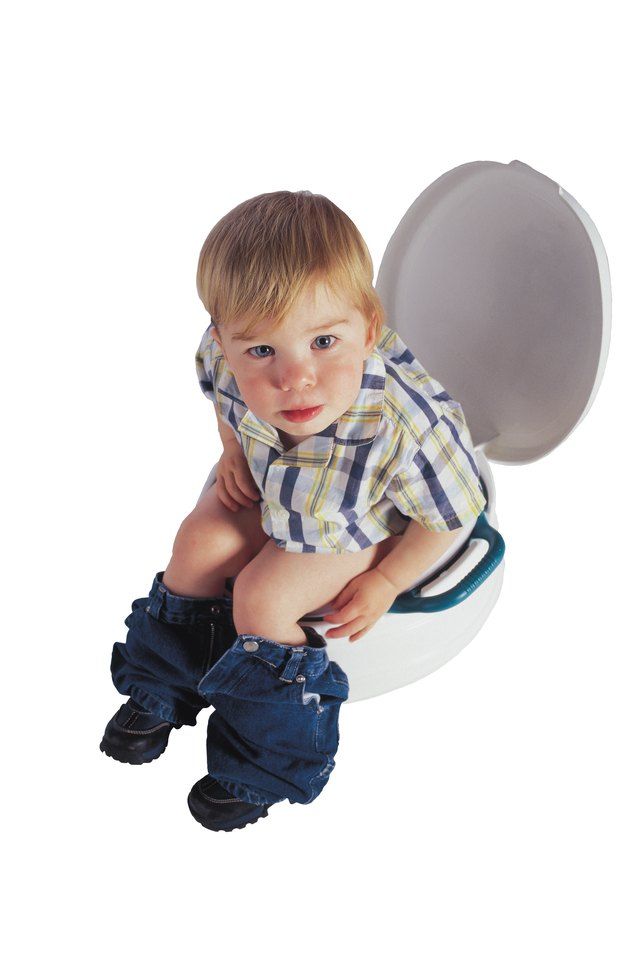
10 Rules for Successful Potty Training
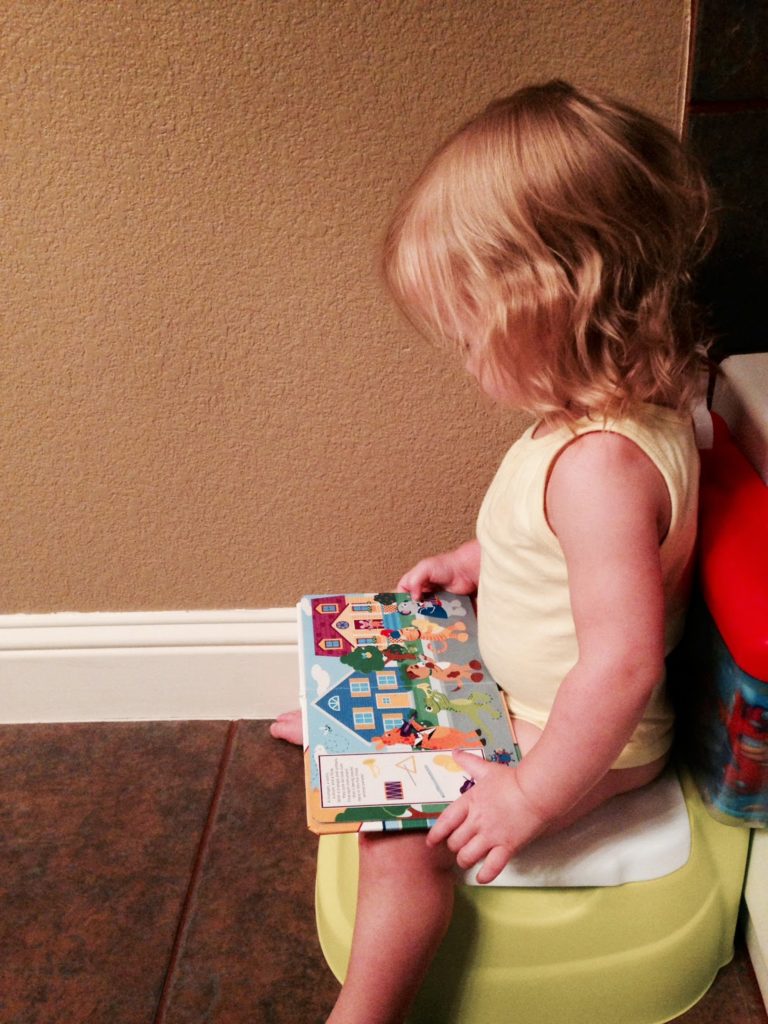 Let's get started.
Let's get started. 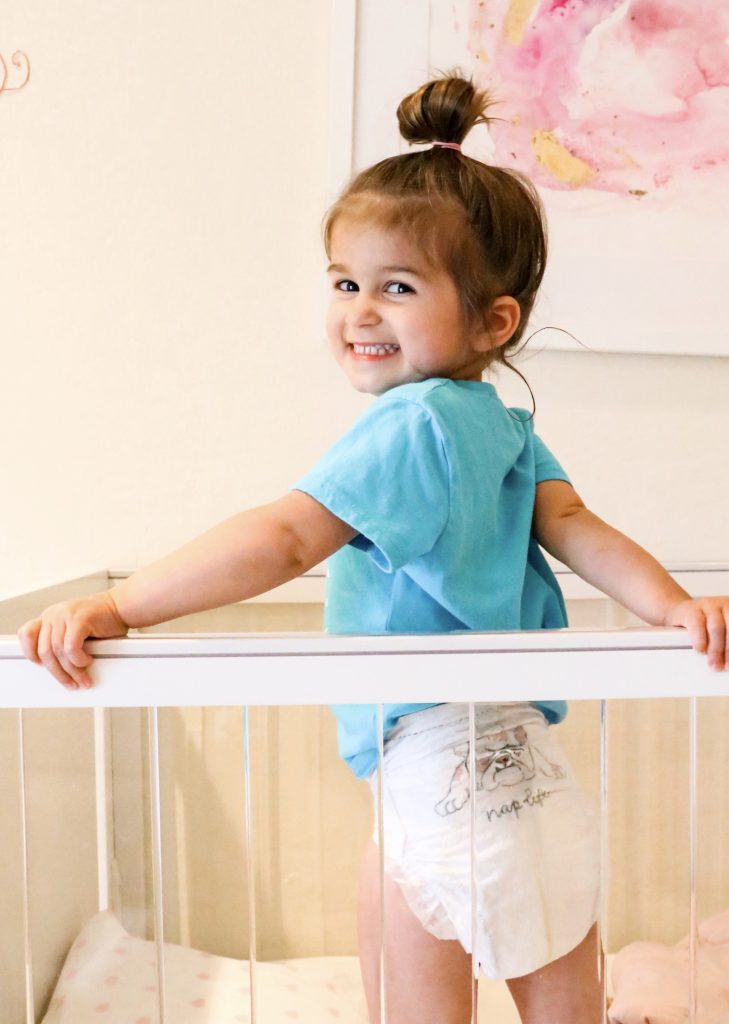

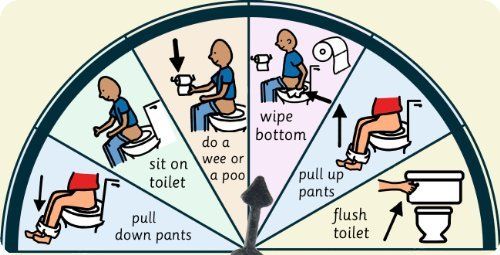 A special stool in the toilet, and peeing from it is just a pleasure and a conscious introduction to the world of adults. And if dad finds time to show how it's done...
A special stool in the toilet, and peeing from it is just a pleasure and a conscious introduction to the world of adults. And if dad finds time to show how it's done... “Baby refuses potty. How to be?
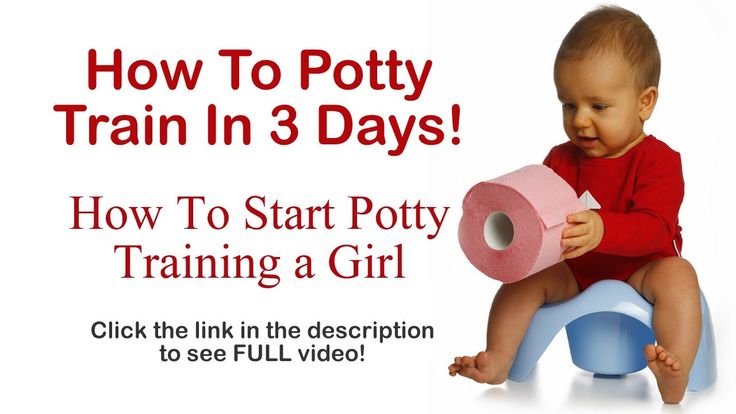 0003
0003 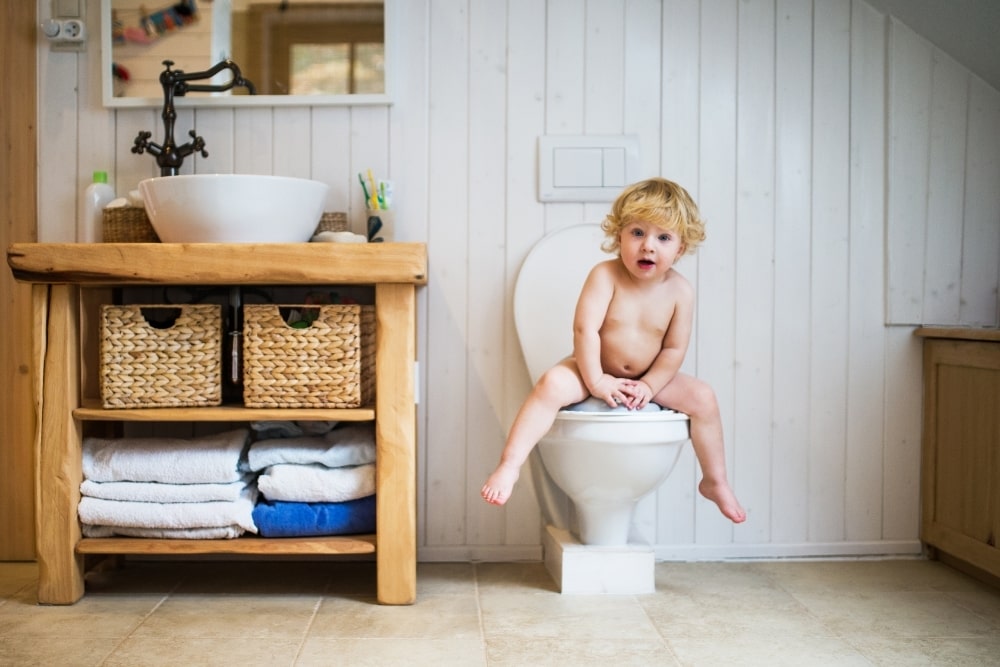 But she is very interested in everything that happens in the bathroom. When one of us goes there, every time she tries to break in and see what we are doing there. Is this normal? Daria
But she is very interested in everything that happens in the bathroom. When one of us goes there, every time she tries to break in and see what we are doing there. Is this normal? Daria 6 most common misconceptions
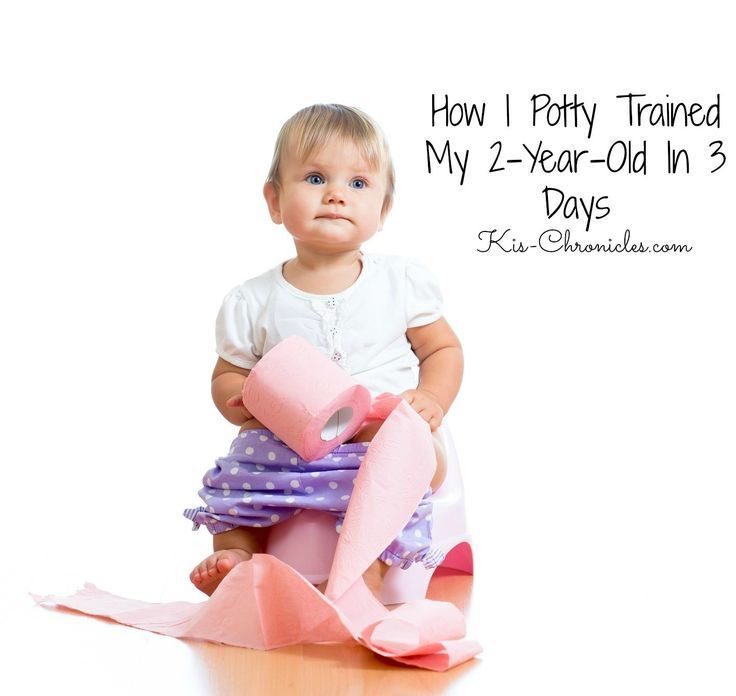 Is it so?"
Is it so?" 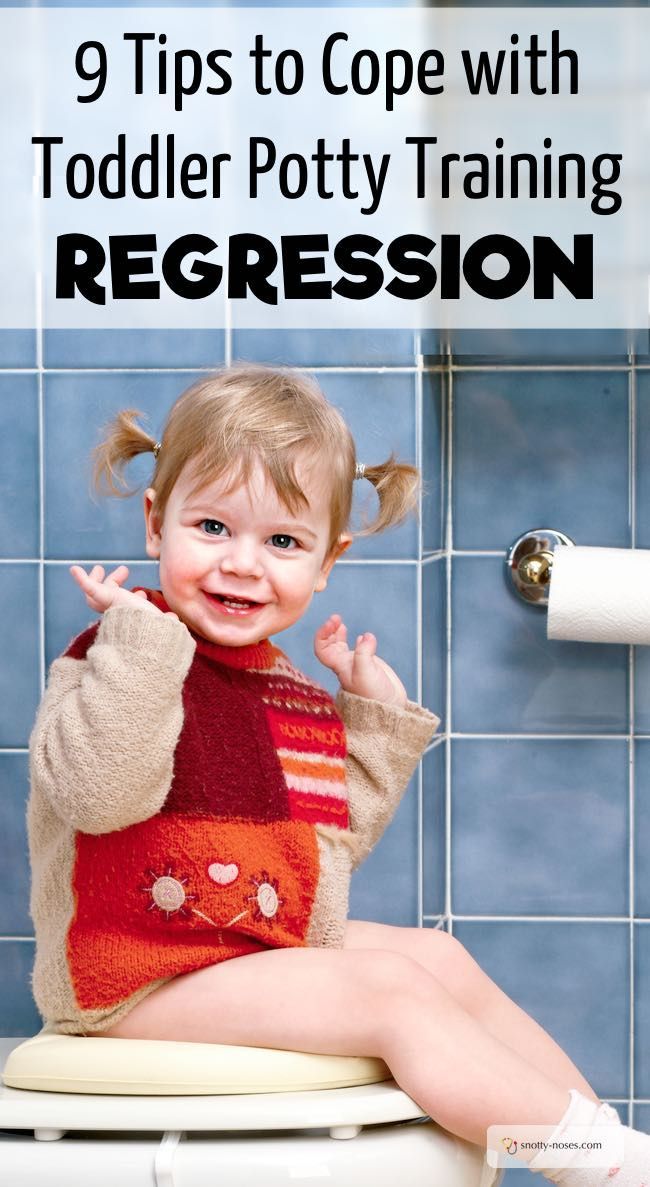 In both groups, the age at which the babies stopped completely needing diapers was exactly the same - an average of 27 months (E. Takanashi, 1988, Japan). Therefore, it is safe to say that the use of disposable dry surface diapers does not affect the ability of babies to learn to use the potty and the age when they can do it.
In both groups, the age at which the babies stopped completely needing diapers was exactly the same - an average of 27 months (E. Takanashi, 1988, Japan). Therefore, it is safe to say that the use of disposable dry surface diapers does not affect the ability of babies to learn to use the potty and the age when they can do it. 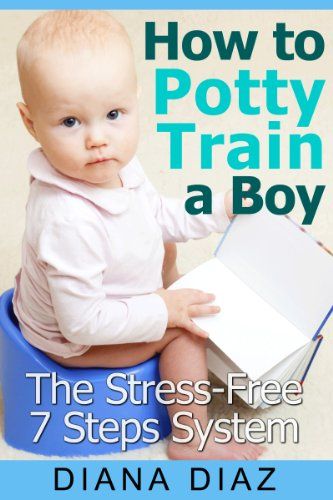 Therefore, to sum up: disposable diapers and boys are compatible.
Therefore, to sum up: disposable diapers and boys are compatible.  My daughter is 1 year old, I tried to teach her, but nothing comes of it. Maybe I'm doing something wrong? Why can't my child learn as quickly as other children?
My daughter is 1 year old, I tried to teach her, but nothing comes of it. Maybe I'm doing something wrong? Why can't my child learn as quickly as other children? 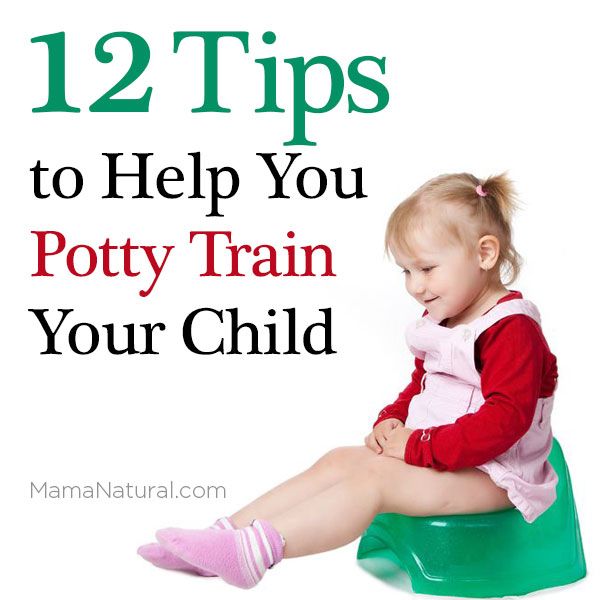 But in the second year of life, this reflex suddenly disappears for the parents. And only then the child begins to consciously learn to go to the potty.
But in the second year of life, this reflex suddenly disappears for the parents. And only then the child begins to consciously learn to go to the potty. 
